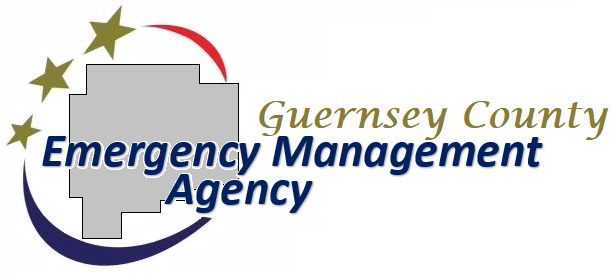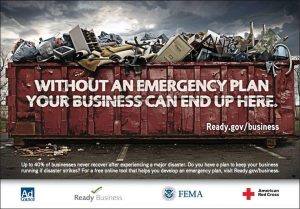Every Business Should Have A Plan
How quickly your company can recover from a tornado, fire, flood or other disasters depends on the emergency planning done today. Business continuity planning must account for both man-made and natural disasters. Plan in advance to manage any emergency. Prepare by assessing the situations, using common sense and any available resources to take care of not only yourself, but your co-workers, employees, and your business’s recovery. Large or small, America’s businesses form the backbone of our nation’s economy. However, up to 45% of businesses never recover from a disaster. So, what’s YOUR plan? Where do you start?
First, make a list: depending on the size of your business, identify several emergency contacts- with phone numbers and email who are authorized to make decisions for the company. If you can’t operate in your current location, is there another location you could operate from? Where is that location? Also, list your Insurance provider(s), plumbers, electricians, law enforcement, fire department, hospital, EMA, emergency medical services, Health department, and EPA.
Next, form an Emergency Planning Team. These people will participate in emergency planning and crisis management. Coordinate with people from neighboring businesses. Identify critical operations and select staff to be in charge and procedures you need to recover from a disaster. Make a list of your suppliers and contractors, include contact information and account numbers. If your company experiences a disaster, what alternative companies can you obtain materials/supplies from?
If you need to evacuate your company: How will you notify your employees? Identify an assembly site and an Assembly Site Manager and a Shut Down Manager, (who is the last one out the door). If your company has more than one floor, assign a Floor Captain to make sure everyone is out of that floor. Who is responsible for issuing an “all clear”?
Have a Shelter In Place plan. Again, how will you notify employees? Where is the best shelter location? Depending on the size of your business, you may need more than one. Have supplies handy in this location to “seal the room”. Identify a Shelter Manager and someone who will be responsible for issuing an “all clear”.
How will you communicate with your employees who are still at the job site and those who are at home? Create a list of Employee Emergency Contact Information. Remember to plan for cyber security and records back up. Back up records should include a copy of your plan, site maps, insurance policies, bank account records and location of computer back ups stored on or off site. If accounting and payroll records are destroyed, how will you provide for continuity?
Consider having some emergency supplies on hand. A large plastic tote, clearly marked and in an easily accessible location or in the case of larger companies, several totes in several locations. Include battery powered radios, flashlights, extra batteries, first aid kit, dust or filter masks, non perishable food and water for 3 days, whistles, moist towelettes, wrenches, pliers, can openers, plastic sheeting, duct tape, and garbage bags. Get suggestions from your Emergency Planning Team. Also, identify water, and utility shut offs and train employees how to shut them down safely.
Include plans for Fire, Tornado, Medical Emergency, Haz Mat or Active Shooters. Practice your plans, including your evacuation plans. Have a mock drill. Review your plan once a year and make changes as needed. Create Employee Emergency Response Teams to assist management with shutting down the building, using fire extinguishers, or performing clean up.
For more information on this topic just call your local Emergency Management Agency.

